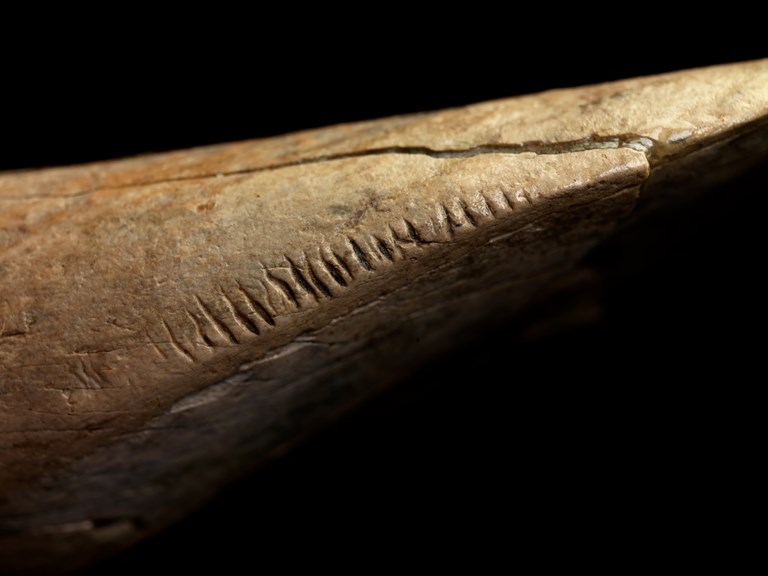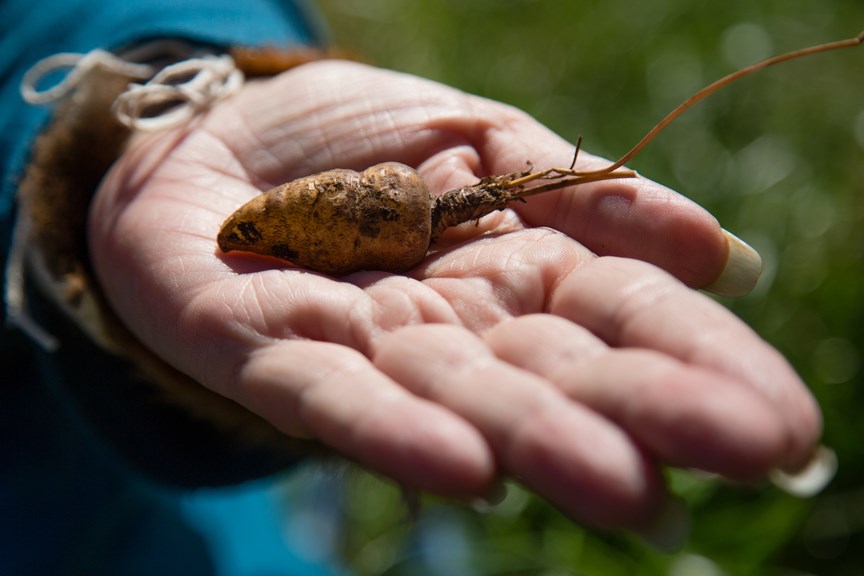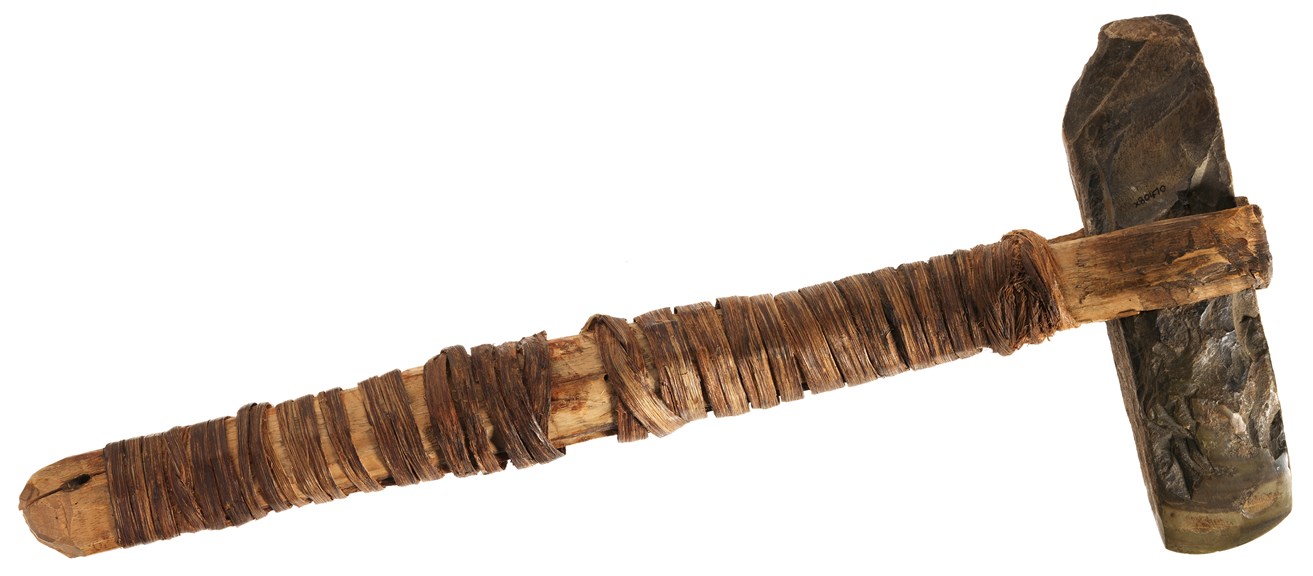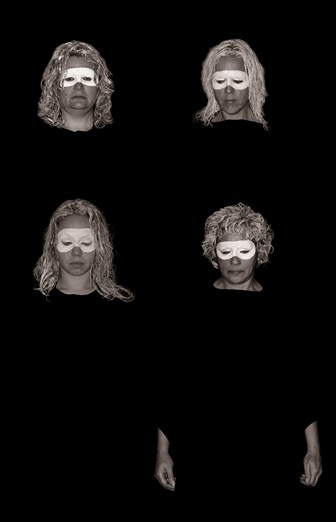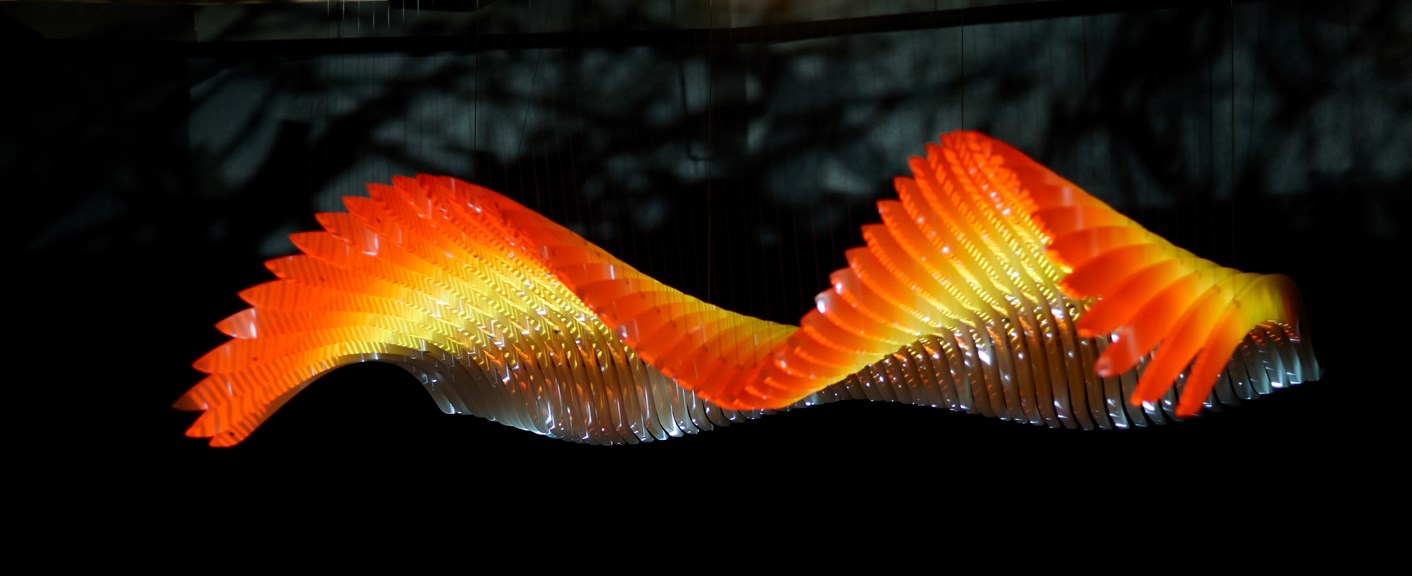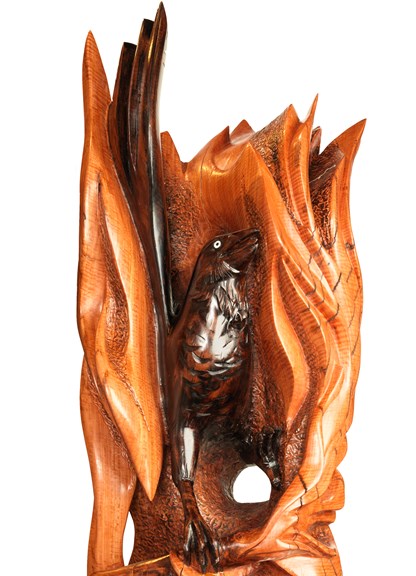About the exhibition
First Peoples is open at Bunjilaka Aboriginal Cultural Centre at Melbourne Museum.
First Peoples is a shared endeavour of Museum Victoria and the Victorian Aboriginal community. The First Peoples Yulendj Group of Elders and community representatives have brought their knowledge, stories, culture, objects and images to guide the exhibition's development.
The welcome area of the exhibition, Wominjeka, invites you to the many Countries of Aboriginal Victoria. Here you are introduced to the diverse languages of Victorian Aboriginal people, languages that you will see and hear throughout First Peoples.
In Generations you can listen to people from across Victoria share stories of connection, family, culture and resilience, and explore a vibrant and poignant collection of historical and contemporary photographs. Generations is a dynamic and interactive celebration of contemporary Koorie identity that features stories that have been handed from generation to generation–stories from yesterday and today, and stories for the future.
The diverse cultures of Aboriginal and Torres Strait Islander Australia are laid out in the spectacular array of Many Nations. Digital labels connect each of the nearly 500 artefacts with the people that made them and used them. Features include a hands-on activity table with fun and educational experiences for kids, and a case of children's objects brought to life through animations.
Our Story chronicles the histories and cultures of Victoria's first peoples, from Creation to the present day, with stories of ceremony, customs, Law and resilience, before and after the arrival of Europeans. This section celebrates the flourishing of Aboriginal peoples and cultures in modern times and pays tribute to those who seek to learn and respect Aboriginal Law.
Wominjeka. Welcome.
Exhibition highlights
Deep Listening
In the Deep Listening space, Koorie people between the ages of 8 and 72 speak about their culture, their Country, their families, their identity and how they all interconnect. They share personal, moving stories of resilience and pride.
Come and listen deeply in this powerful and large-scale multimedia experience.
Diprotodon tooth
Wanggatun Waliyt (‘long long time’ in Wooloowoorroong language) invites visitors to follow Diprodoton tracks back through time, to see, hear and feel, signs of people and Country.
A unique Diprodoton tooth with repetitive markings is a reminder that Aboriginal people lived on this continent during the megafauna era and poses questions about the tooth’s meaning.
Mirnong or yam daisy
Badjurr-bulok barrgi mirnong (‘women harvest the yams’ in Taungurung language) reveals Kulin women’s knowledge of the seasons and environment and the preparation of mirnong to feed their families.
Elsewhere in the exhibition, you will see the Woi Wurrung spelling for this plant, murrnong.
Stone axe
Galbaling Ngarruk (‘stone axe’ in Woi Wurrung language) explores men’s business, judicial law and trade markets and connections.
Early Encounters
Early encounters between Victorian groups and ‘strangers’ occurred decades before the official settlement of Port Phillip (now known as Victoria) in 1835. Along the coastlines, ships from all over the world sailed and landed, explored and charted, hunted and exploited, while along the inland travel routes, news and disease spread across inter-tribal communication networks. These early encounters were sometimes friendly and sometimes not. They were sometimes extraordinary experiences and sometimes devastating tragedies. They included curiosity and cooperation, theft and battles, trade and learning, terror and loss.
Two scenes are portrayed in the Early Encounters section: Meen Warran (small pox in Djab Wurrung language) features a kopi (mourning) installation by Maree Clarke; and koolin djerring nairm-u (strangers from the ocean in Boon Wurrung language) where Elder Carolyn Briggs describes the impact of sealers and whalers on the Boon Wurrung people.
Bunjil's Wings
Bunjil the Creator, who sometimes appears as an eagle, and Waa the Protector, who sometimes appears as a crow, are Creation Ancestors for Victorian Aboriginal people and guardians of the First Peoples exhibition.
Visitors are invited to enter Bunjil's Nest where a kinetic sculptural and audiovisual installation chronicles the Creation of Countries. The soundscape features Koorie Elders reciting the story of Bunjil singing the Country, Law and Kulin peoples into being.
Jimbayer Waa
Jimbayer Waa (learning Waa in Dja Dja Wurrung language) provides space for visitors to connect with a significant Creation Ancestor from across Victoria. Jaara woman Justice Nelson recounts how Waa the crow provides the gift of fire. The magnificent river redgum carving is ‘inspired by and in the spirit of collaboration to honour the many stories of Waa’.

